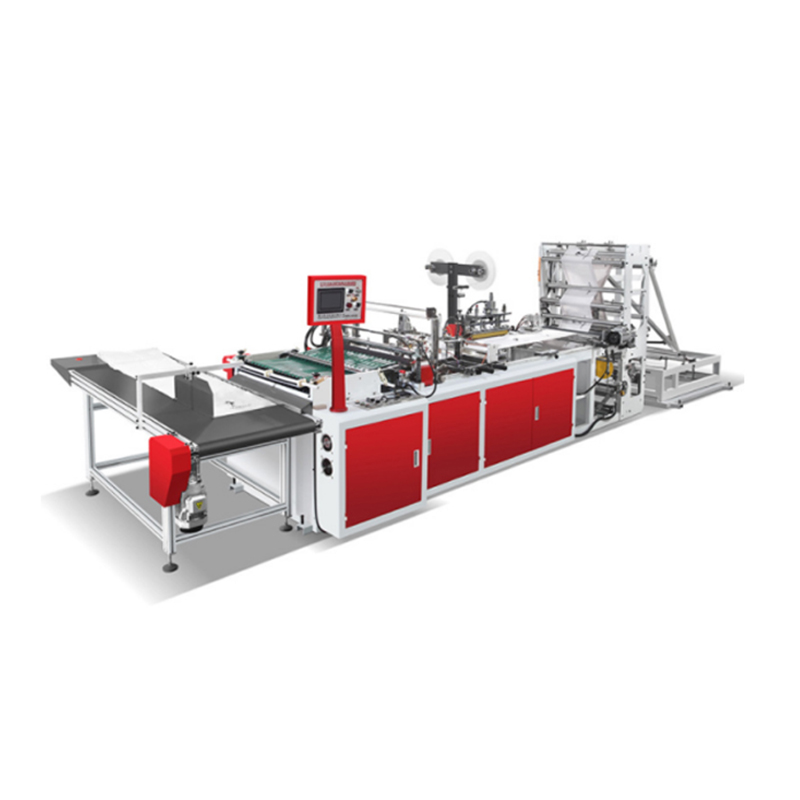Drawstring Bag Making Machines: Boosting Efficiency and Quality in Packaging Solutions
 By Admin
By Admin
In the packaging industry, drawstring bags remain a popular and practical solution for retail, promotional, and everyday use. From grocery stores to apparel outlets, these bags provide a convenient, reusable, and attractive option for consumers. The backbone of their production is the Drawstring Bag Making Machine, a specialized piece of equipment engineered to automate the manufacture of these functional bags with speed, precision, and reliability.
As demand grows for higher-quality bags made from diverse materials, modern drawstring bag making machines have evolved significantly.
1. High-Speed Automated Production
A feature of contemporary drawstring bag making machines is their ability to operate at high speeds while maintaining quality. Depending on the model and bag size, these machines can produce between 60 to 120 bags per minute, significantly increasing output compared to manual or semi-automatic processes.
This high throughput is achieved through synchronized mechanical operations including bag cutting, sealing, string insertion, and handle finishing, all coordinated by advanced PLC (programmable logic controller) systems.
2. Multi-Material Compatibility
Modern machines are designed with versatility in mind, capable of processing a wide range of raw materials such as non-woven fabrics, polyethylene (PE), polypropylene (PP), and biodegradable films. This adaptability enables manufacturers to meet growing environmental concerns by producing eco-friendly drawstring bags while catering to traditional plastic bag markets.
The machine’s adjustable feeding and sealing mechanisms ensure consistent handling of materials with different thicknesses and properties, reducing material waste and improving product uniformity.
3. Precision Sealing and Cutting Technology
Quality drawstring bags require strong and neat seals that withstand everyday use. These machines incorporate advanced heat sealing systems, using temperature-controlled sealing bars that ensure airtight and durable seals without damaging the material.

Laser or ultrasonic cutting options further enhance precision by providing clean, burr-free edges, contributing to a professional finish and reducing the need for secondary trimming.
4. Automated String Feeding and Knotting
One of the critical components in drawstring bag manufacturing is the drawstring insertion and closure mechanism. Automatic machines feature integrated string feeding units that accurately insert strings into the bag channels, followed by knotting or sealing processes that secure the drawstrings reliably.
This automation eliminates manual handling, reduces errors, and ensures consistent string tension and placement, which directly impacts the bag’s usability and consumer satisfaction.
5. User-Friendly Control Interfaces
Operators benefit from intuitive touchscreen interfaces that simplify machine setup, parameter adjustment, and troubleshooting. These HMIs (human-machine interfaces) display real-time production data such as speed, temperature, and fault alarms, enabling quick responses to any issues.
Memory functions allow saving specific settings for different bag sizes or materials, facilitating rapid changeovers and reducing downtime in multi-product manufacturing environments.
6. Integrated Quality Control and Fault Detection
To maintain consistent quality, many machines are equipped with sensors and cameras that perform automated inspection during production. These systems can detect issues such as material misalignment, incomplete sealing, or string placement errors, triggering alerts or automatic shutdown to prevent defective products.
This real-time monitoring enhances product reliability and reduces waste, translating into cost savings and higher customer satisfaction.
7. Modular Design for Easy Maintenance and Upgrades
Recognizing the importance of operational uptime, manufacturers design drawstring bag making machines with modular components that simplify maintenance and part replacement. Quick-release sealing bars, accessible string feeding units, and easily removable cutting blades facilitate fast servicing.
Modularity also allows integration of additional functions such as printing, embossing, or lamination, enabling manufacturers to expand capabilities without investing in entirely new equipment.
8. Energy Efficiency and Environmental Considerations
Energy-efficient motors and optimized heating elements contribute to lower power consumption, aligning production with modern sustainability goals. Some machines are designed to handle recycled or biodegradable materials, supporting eco-conscious brand positioning.




